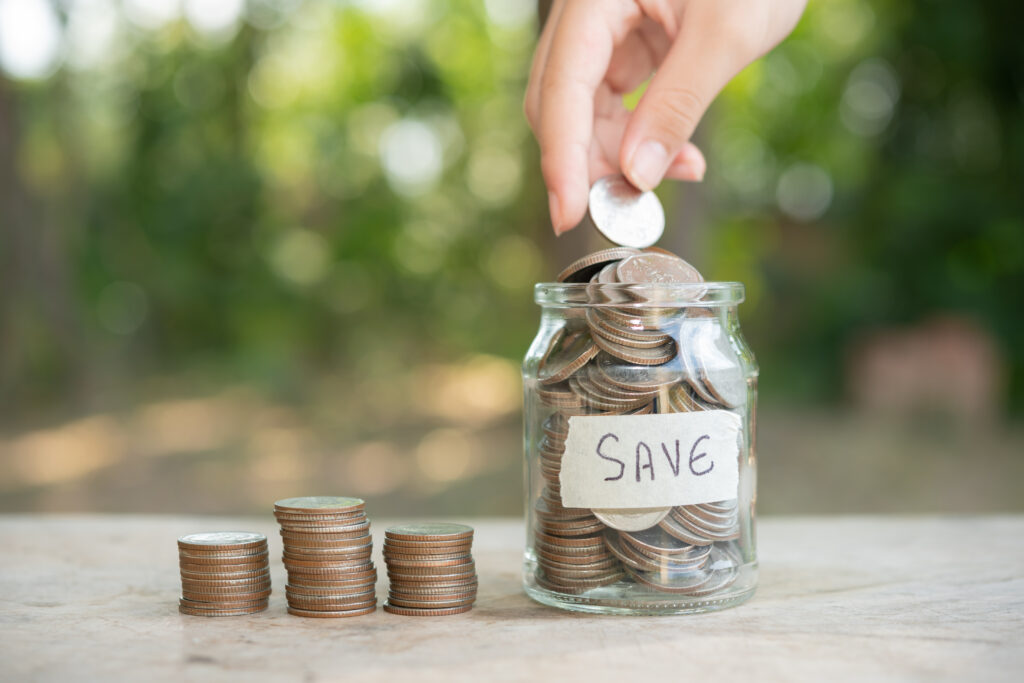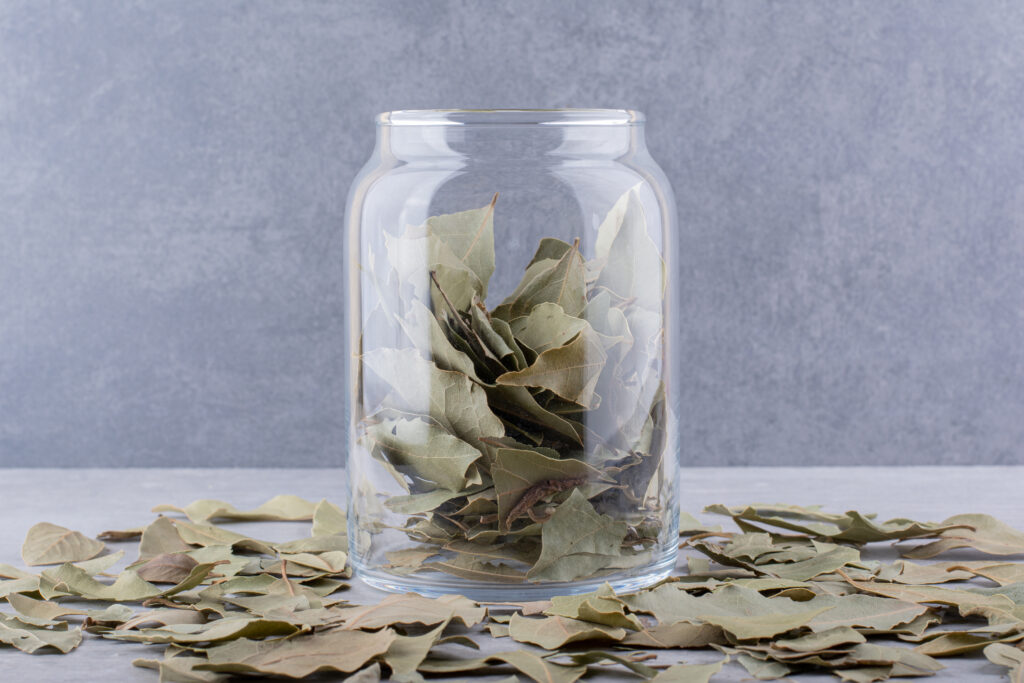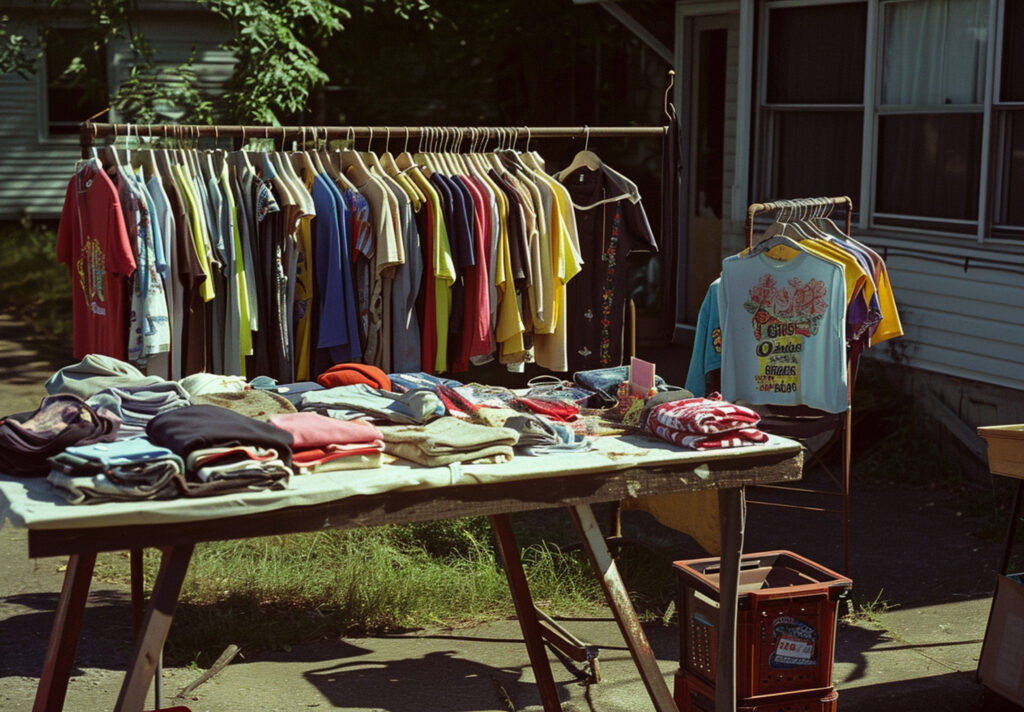Alright, let’s be real for a second:
Black Friday is coming. And Christmas (and we all know why exactly Black Friday is so close to Christmas, right?). And all those “limited time offers” that somehow end up costing as much as a long weekend getaway.
To be fair: Since my father taught me how to bargain on a flea market I love a good deal – I literally keep a “Black Friday” list on my phone all year long where I add all the things I really need and would buy them anyways to save on them on Black Friday. Kids’ winter boots? On there. Cat Food and other supplies I can stack up on? Definitely on there. My husband’s socks? Always on there, because somehow they disappear into the void. But you see: It´s rather things we really need and use up instead of clutter or upgrading something that still works.
So yes, I do a little intentional splurge-shopping in November, but that´s the secret: I plan for it. I wait for it. And after that? I go into full-on money spending detox mode until April.
That’s why I wanted to share this post, because I’m tired of the same old “No-Spend January” advice where you hold back your expenses and then splurge in February. It´s the same mindset shift you need when you´re losing weight: You need to change your habits in the long term. I know that´s harder than just being disciplined for 30 days. But being hard on yourself and disciplined for only a month won´t change a single thing on your bank account. So I came up in this article with REALISTIC money saving challenges that I already tried and will actually fit into your real 2026 life, not just your Pinterest board.
So here are 3 unique money saving challenges to try in 2026. Each packed with realistic frugal hacks and money saving hacks that’ll ACTUALLY help you save money in the longterm without losing your sanity.

1. The “use what you already have”- savings challenge but make it strategic
You have probably heard of this one before, but most people do it wrong. It´s basically a declutter and a saving challenge at the same time because you are using up the resources you already have at home and that can be really fun! I get a dopamine kick higher than my blood sugar crash after Gummibears when I finish a product or a staple and you can learn to love that too!
Don´t treat it like punishment. No spending does NOT equal no fun and you don´t have to stare at your pantry wondering how to make dinner out of chickpeas and frozen spinach (yes, you can, but it won´t be very delicious).
Let’s fix that. The goal isn’t deprivation and self-punishment , it’s strategic saving and making more out of what you already have.
Step 1: Take a home inventory
Before the new year starts, walk through your house like a frugal detective and make a list.
Ask yourself:
- What do I already own? What is already here (especially food and cosmetics and clothes).
- What unopened products are hiding in the back of my cabinets?
- What can I use up before I buy again?
- Which clothes can I combine in a new way?
- What hobby gear is in my garage that I haven´t been using for a long time?
Make it a treasure hunt at home and note on your list what „new“ things you want to do with your old stuff, e.g. finishing the old upcycling project, playing with your old Gameboy, finding a new style with your wardrobe…. You’ll be amazed at how much hidden value is already sitting in your home and how many things you can use in a new way (I once made a video about cleaning out my whole pantry before moving and we saved a loooooot! Here you can watch it, but beware, it´s in German: Alles weg?! Project Pan im Vorratsschrank vorm Umzug | Geld sparen bei Lebensmitteln)
Step 2: Set weekly “use it up” missions
So instead of declaring a year-long spending freeze, break it down into projects and make something new and exciting out of it (that gives your brain the dopamine hit it usually gets from shopping).
For example:
- Week 1: Cook 3 pantry-only dinners.
- Week 2: Use up one beauty product.
- Week 3: Exchange the battery in an item that you want to use again.
Each small success gives you momentum, contentment and real savings.
Step 3: Track your “avoided spending”
Instead of focusing on what you can’t buy, track what you didn’t buy and which unneccessary spendings you avoided. Write it down or keep a digital note.
Example:
- Skipped takeout because you cooked out of your pantry staples= $35 saved
- Used old shampoo up = $5 saved
- Didn´t go to the movies because you binge watched your old Gilmore Girls DVD´s = 30$ saved.
- Using up old craft supplies to DIY a birthday card = 3$ saved.
I call this my swap-savings list and I can tell you: It sure adds up!! I once “avoided” spending $327 in one month by simply doing this and I didn´t have once the feeling of missing something. If you´re feeling really fancy you can also create a folder on your phone called “Didn’t Buy It.” Every time you resist an impulse purchase, screenshot the cart and save it there. If you really still want it after a couple of months you can go back and purchase it, but you´ll see how grateful you´ll be about not having purchased 90% of the items in hindsight. It’s a surprisingly powerful way to visualize your progress.

2. The “One-In, One-Out (with receipts)”-Savings Challenge
This one’s for my Target-wanderers (never actually got the hype about this overpriced store?) you go in for toothpaste, and somehow leave with matching mugs, a candle, and a vague sense of shame.
The classic minimalist “one-in, one-out” rule is great in theory and works for many (me included), but let’s make it actually measurable and turn it into a real money saving challenge.
Step 1: Create a receipts jar
So this is how this savings-challenge is gonna work:
1. Every time you buy something new (it doesnt´really work with food, only for clothing, decor etc.), write the item and cost on a slip of paper and drop it in a jar.
2. Every time you sell, donate, or declutter something, estimate its real value and drop that in, too.
At the end of the month, compare the two piles and note what you SPENT and what you RELEASED.
If your “out” pile outweighs your “in” pile I wanna congrats you, because you’re winning the minimalist money game.
Step 2: Start a “swap fund”
After you have written down the value of the decluttered items, move that value into a dedicated “swap fund.” That fund can only be used for future secondhand finds, e.g. Facebook Marketplace, thrift stores, local swaps, etc. That’s how you build a cycle of sustainable spending and intentional underconsumption instead of endless consumption. And once you realize how much great stuff people give away for free or how cheap thrift stores are, full-price shopping will feel ridiculous to you.
Step 3: Reflect once per quarter
Pour a cup of coffee (or wine, if that’s your style) and review your receipts jar every few months.
Ask yourself:
- Which bought items did I actually love and use?
- Which ones were just impulse dopamine hits and how can I avoid those in the future?
- Where can I do better next quarter?
- How much did it actually save me?
This reflection step turns your challenge into a lifestyle and makes it stick for the longterm. And let me tell you: There is nothing wrong about being a little bit obsessed with your spendings. You are not greedy or stingy or obsessed with money when you do that: You are obsessed with your freedom that lies beneath and that´s great!

3. The “Not Buying Anything New” Savings Challenge
This is actually the Challenge I´m gonna do in 2026 for myself! We live in a world overflowing with stuff. There is already more than enough for everybody on this earth! Like, seriously, if we´d stop producing new clothes TODAY, we could probably clothe six generations more with the clothes that are already available on this earth. And don’t even get me started on the kitchen gadgets, toys, or random “as seen on TikTok” gadgets lurking in drawers and garages.
So here’s my self-imposed 2026 challenge: Using up all the staples I already have and not buying anything new (besides underwear, socks or of course hygienic items because I am not THAT crazy). Yes, even gifts for my kids. Yes, even gifts for other persons. An allowed workaround is, to CREATE something new (e.g. a self-made birthday card or crafting something personal for a loved one).
This isn’t just a money-saving challenge, it’s a sustainability challenge, a mental declutter, and a hardcore exercise in intentional living.
Step 1: Audit what you already own
Before diving into the year, do a quick inventory of your closets, drawers, and storage bins.
- Clothes that still fit and you like?
- Kitchen gadgets, tools, toys, books, games – all usable?
- Beauty products that haven’t expired yet?
Once you see how much you already have, it hits you: You could probably not leave the house for 6 weeks and would still have enough in your house to not starve or start the washer.
Step 2: Set clear rules for yourself
The rules for this savings-challenge are easy (these are the rules I am gpoing to apply for my Saving Challenge 2026):
- No brandnew clothing, decor, gadgets, or non-essential items. If you really want an item it HAS to be second hand / preloved. You can search in local thrift stores, online thrift stores or on Facebook Marketplace.
- You can of yourse buy essentials (toilet paper, groceries, etc.). new.
- Exceptions? Only if it replaces something that’s truly broken beyond repair and can´t be found within a reasonable distance as a second hand-item.
This challenge is great for retraining your brain to see value in what you already own and to add an additional barrier to new purchases: It´s harder to really search intentionally for an item in thrift stores than just clicking the 1-click-order button on Amazon and the dopamine hit get´s delayed. Plus: IF you should ever get a relapse and dulge into a shopping spree, a thrift store haul won´t make you broke and you don´t harm the environment.
Step 3: If you are struggling wih this challenge:
Try this, if you´re having trouble sticking to your rules:
- Make a Pinterest Board with new styles, fashion ideas, hairstyles and decor ideas and try to recreate them with what you already have.
- Research the store-prices for your thrifted itemas and write them down. Add them up after a few months and you´ll be shocked by the differences! Full-price shopping will feel 100% ridiculous afterwards.
- Kitchen creativity: Research recipes for those fancy spices you have in your drawer and never use and try to create gourmet meals out of them.
- Swap with family and friends: Works perfect especially for kids toys!
- Get it as a rental: You can borrow a lot of stuff from the library or your local Home Depot. Enjoy it for a day and then bring it back.
Why this works so well!
- Money saving impact: only second hand purchases = instant savings (indeed you will ask yourself how you´d ever shopped for full price??).
- Sustainability impact: You will feel so much better, because there were fewer items produced, less waste, and you actually appreciate more of what you already have.
- Mindset shift: going back to full-price shopping afterwards? Feels absurd. You’ll never look at impulse buying the same way again.
- Longterm effect: Having items with character and backstories in your home will make it feel more individual and not so „standardized“.
This isn’t just a challenge: It’s a longterm lifestyle reset. Minimalism meets saving money meets real-world sanity. And honestly? Once you try it, you’ll start thinking twice before buying anything full-price ever again.

More everyday Frugal Hacks that make every challenge easier
These simple money saving hacks will make your challenges more effective (and more fun).
1. Automate your savings
If you wait until you “have extra money,” it won’t happen. „Pay yourself first“ before all the automatic payments come: Automate weekly transfers for your savings account – even $25 a week adds up to $1,300 a year!
2. Create a temptation fund
Set aside a small “fun money” budget every month, e.g. 50$. Knowing you can spend when you really choose to do so removes the guilt and helps you stay consistent.
3. Shop your kitchen before grocery shopping
Plan at least two meals from what you already have before hitting the store. The best way to avoid the „what can I cook today“-feeling is to have a list with your stored items and the meals you could make out of them hanging on the fridge. Works best when it´s on eye level and reminds you every time you open the fridge. Fewer impulse buys, less food waste = more money saved.
4. Remember: saving = freedom
You’re not cutting back to punish yourself. You’re working on your freedom! the ability to say no to bad jobs, stress, and panic spending. That’s what frugal living really means.
At the end of the day, saving money isn’t about being greedy or stingy, it’s about being intentional.
These money saving challenges help you slow down, get creative, and take back control of your spending.
They’re not about restriction. They’re about peace. And honestly? That’s the kind of wealth we all need a little more of in 2026! So pick one of these unusual saving challenges and give it a try. You’ll start the year lighter in clutter, in stress, and maybe even in bills.
Now go make that “use what you have” pasta and call it a gourmet night. Your future self (and your bank account) will thank you a 100%.
You want to learn more? Don´t forget to subscribe my YouTube Channel and / or my Pinterst-Channel!
Or download my FREE 5-Page MoneyMalism Planner Bundle (usually 49,99€!) now – designed to help you declutter your mind, organize your finances, and move boldly towards financial freedom. Minimal effort. Maximum clarity. Grab your free planners here!
moneymalism.de – Become a moneymalist. Explore real freedom.





